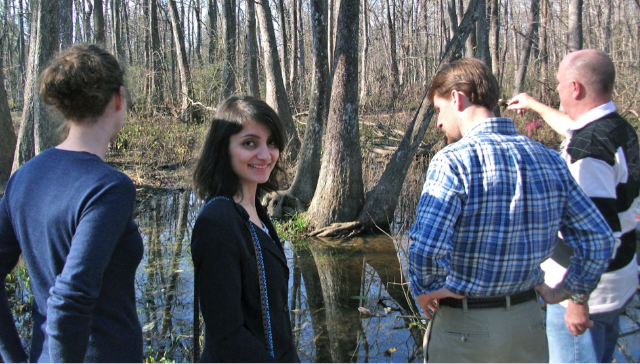Asif Jan Haveli
After some email exchanges, I along with my friends finally got permission to visit the Asif Jan Haveli on a bright and clear Saturday. The haveli is now The Government College Fatima Jinnah, but is not open to visitors.
Walking from Delhi gate (one of the thirteen gates of the walled city) and by-passing the famous Masjid Wazir Khan, we reached the Haveli. It was all wired and barricaded but we managed to get in easily. The main entrance archway had a huge wooden door giving the sensation of a fort. Given that is 42 kanals, it may well have been one.

This Haveli dates back to the period of Mughal Emperor Jahangir when Asif Jah Khan was appointed as Governor of Lahore by Jahangir in 1625. He was the father of Queen Mumtaz Mahal, who was the wife of Mughal emperor Shah Jahan. There are various references in history about the construction of this Haveli, some of them relate to Asif Jan while others make mentions of Dhayan Singh and Khushkhal Singh. Most of the remaining architecture that is part of the college that stands now, is Asif Jah haveli. When we asked around, the people in the school traced its history to Asif Jah, with no such mention of Dhayan Singh.
When you enter the haveli, it opens up to three courtyards. The buildings have arched hallways, stairs leading outside, and a number of passageways. There is one passageway, that leads to a tunnel that goes all the way to the Lahore Fort. The architecture of the building reflects a mix of Mughal and Sikh influence. Blue lotus flower petals are painted on most of the pillars, while the balconies resemble the architecture of Lahore Fort and other buildings of that era.
We were told by the Principal that they are working on a book that relates the history of this Haveli. It would be undoubtedly a great contribution to learn about this haveli, whose past has yet to be studied or penned down.
Walking from Delhi gate (one of the thirteen gates of the walled city) and by-passing the famous Masjid Wazir Khan, we reached the Haveli. It was all wired and barricaded but we managed to get in easily. The main entrance archway had a huge wooden door giving the sensation of a fort. Given that is 42 kanals, it may well have been one.

This Haveli dates back to the period of Mughal Emperor Jahangir when Asif Jah Khan was appointed as Governor of Lahore by Jahangir in 1625. He was the father of Queen Mumtaz Mahal, who was the wife of Mughal emperor Shah Jahan. There are various references in history about the construction of this Haveli, some of them relate to Asif Jan while others make mentions of Dhayan Singh and Khushkhal Singh. Most of the remaining architecture that is part of the college that stands now, is Asif Jah haveli. When we asked around, the people in the school traced its history to Asif Jah, with no such mention of Dhayan Singh.
When you enter the haveli, it opens up to three courtyards. The buildings have arched hallways, stairs leading outside, and a number of passageways. There is one passageway, that leads to a tunnel that goes all the way to the Lahore Fort. The architecture of the building reflects a mix of Mughal and Sikh influence. Blue lotus flower petals are painted on most of the pillars, while the balconies resemble the architecture of Lahore Fort and other buildings of that era.
We were told by the Principal that they are working on a book that relates the history of this Haveli. It would be undoubtedly a great contribution to learn about this haveli, whose past has yet to be studied or penned down.



0 comments